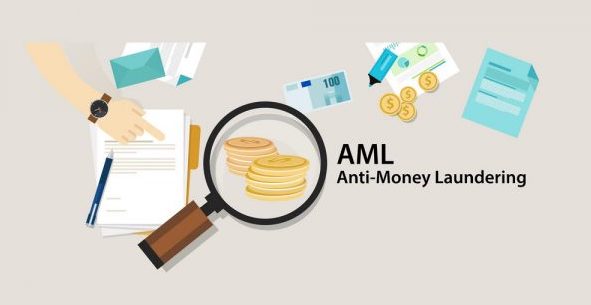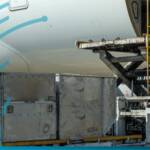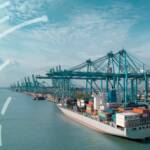Estimated reading time: 17 minutes
This article originally appeared in the July/August 2022 edition of Documentary Credit World (doccreditworld.com).
Those who forget the lessons of history are condemned to repeat them. Trade finance frauds are no exception.
At the IIBLP’s Dubai Trade Law & Compliance Conference held in Dubai on 15 March 2022, one of the panellists referred to the Solo Industries fraud in a panel discussion addressing the recent Singapore case, Credit Agricole Corporate & Investment Bank (CACIB), Singapore branch v. PPT Energy Trading Co.
In this case, the Singapore Court ruled that “fraud can only, by definition, encompass a beneficiary who acts dishonestly, in presenting otherwise facially compliant documents either with the knowledge that what is contained therein is false, or without belief that what is contained therein is true.” The Court determined that CACIB, as an issuing bank, could have defence to the claim under the Letters of Credit (LCs) only if it could prove that the beneficiary (PPT) was a party in the scheme to defraud CACIB which its own client, the Applicant (Zenrock Commodities Trading Pte Ltd.) had perpetrated.
The reference to Solo Industries took me down memory lane when I was heading trade finance operations of a bank in Dubai in the mid-1990s and was receiving several high value LCs in favour of Solo Industries issued by my bank’s correspondent banks and its overseas branches in India, Europe, and USA.
My bank’s role was to simply act as an advising bank and since the LCs were “freely negotiable” (a term used in UCP500) and were not required to be confirmed, no documents under the LCs were ever presented to us. Wondering as to the disposition of the documents and sensing a possible discounting opportunity from Solo Industries, I called Madhav Patel, Director of Solo Industries, requesting him to route some business through my bank. He simply replied, “not interested”.
It seemed that he was getting far better pricing from other banks in Dubai than what he thought my bank could possibly quote at the time in 1995.
I could certainly match or improve on his pricing expectation, but I had a strange hunch to drop the discussions. It was as if my intuition was telling me that something was not quite right which my rational mind could not yet explain. A few days later, Patel came down to my bank to see me. Having built his reputation over 20 years, Patel was quite well known in Dubai banking circles and was considered a highly respected, sought after businessman among the trade finance banks. For instance, I was told that an AED 100m (USD 27.2m) facility was approved for Solo Industries by one bank in Dubai in less than a week. This would be my first and last meeting with Patel.
We exchanged business cards (I still have his as memorabilia). He looked suave, well-mannered, and sophisticated in his soft and gentle speaking style. At the time, no one thought in their wildest imagination that Madhav Patel’s company was presenting fake or falsified documents covering non- existent cargoes under LCs and that the company was perpetrating massive multi-hundred million dollar LC frauds which would eventually cause unprecedented losses to banks and cost several corporate bankers and relationship managers their jobs.
In the UAE alone, 26 banks lost close to USD 500m and a few other banks in the Gulf region, Europe, and Far East collectively losing another few hundreds of millions of US dollars. Such was the extent of the fraud that one multinational bank delayed its 1999 balance sheet that year to reflect and book its losses arising from the frauds. Another multinational bank decided to exit from the Gulf region. One branch of a bank in the Middle East reportedly lost an amount exceeding its local country capital brought in to support its UAE operations.
Patel became UAE’s most wanted criminal and was also wanted by Interpol and police in India, Bahrain, France, Switzerland, Belgium, and UK. By 1999 after I had already moved to Bahrain, I read in local newspapers about the Solo Industries fraud and realised how true my hunch was. I was lucky. But did banks in the region learn their lesson?
To avert recurrences of financing fraudulent trade finance transactions, most banks in the region took membership of International Maritime Bureau (IMB) to avail its “trade finance documents authentication” service and implemented, as a preventive measure, a policy of making checks on bills of lading (B/Ls) with IMB before financing transactions. Prior to 1999, most banks in the region were not even aware that IMB existed or that it provided a service of checking authenticity of B/Ls.
This measure made sense as it provided comfort to discounting banks in the light of the judgement in Banco Santander SA v. Banque Paribas in which an English Court of Appeal affirmed that an issuing bank could refuse payment under the fraud exception in case of deferred payment credits if the issuing bank came to know of fraud prior to maturity. This would not, according to the Court, hold true in case of acceptance credits in which a bill of exchange was presented and duly accepted or where the proceeds were assigned to the discounting bank with the assignment notice having been duly acknowledged by the issuing bank.
As a fallout of the Banco Santander case, some banks in the Middle East started issuing LCs on deferred payment terms but when it came to adding confirmations, they insisted on acceptance credits, believing that they would be protected if a fraud occurred and the matter went to court.
Was the Solo Industries fraud saga over and rendered “a thing of the past” after banks started checking on B/Ls? Far from it. Solo Industries, dubbed “the fraud of the decade”, was only a precursor to a larger scheme of trade finance frauds in the years to come.
Fraud unravels all. Fraudsters know that if they present complying documents to banks under LCs, they could walk away with a hefty amount of money even if they never ship cargo. The LC mechanism is vulnerable to abuse, not only for frauds but also for violation of foreign exchange controls and regulations, illegal capital flight, trade-based money laundering, and other financial crimes. Each day, banks take in hundreds of millions of US dollars’ worth of payments based on documents. But documents can be forged.

The complexity and scale of trade finance frauds, corporate failures with huge outstanding debts, and substantial bank losses over the years has grown disproportionately. In the case of Solo Industries, the largest amount lost by a single bank was around USD 25m to 30m, but in case of the 2009 multi-billion-dollar collapse of Saad Group, some banks lost in the range of USD 500m. Saad Group was controlled by Maan Al-Sanea, a Saudi Arabian billionaire who owned over 3% of shares in HSBC. Just like Patel, he was a highly respected businessman in banking circles.
A majority of the fraudulent transactions of Saad Group were under LCs issued by Bahrain-based Awal Bank, a subsidiary of Saad Group and The International Banking Corporation (TIBC), Bahrain in which Al-Sanea was a managing director. TIBC was controlled by Ahmad Hamad Al-Gosaibi & Brothers (AHAB) and Al-Sanea was married into the Al-Gosaibi family.
Both Awal Bank and TIBC were placed under moratorium by the Central Bank of Bahrain (CBB) in 2009 for their failure in settling their obligations towards creditors including local and international financial institutions. Preliminary investigations revealed that there were numerous violations of CBB regulations in the management of Awal Bank which constituted deception, breach of trust, embezzlement and money laundering, as reportedly advised by CBB in written communication to Bahrain’s Attorney General (Public Prosecution). By some estimates, the total amount involved in Saad Group together with Ahmad Hamad Al-Gosaibi & Brothers (AHAB) exceeded a massive USD 125b.
While some banks were still reeling from the Saad Group frauds, the failure of New Medical Centre in UAE in 2020 left certain banks with a staggering outstanding debt of USD 6.6b. Meanwhile Singapore-based banks suffered losses of around USD 9b in commodity trade finance transactions which led the likes of ABN AMRO, SocGen, BNP Paribas, and others to either exit or curtail their commodity trade finance business.
How can banks better position themselves to avert fraudulent trade finance transactions? One industry report suggested that heightened alertness on the part of operational staff could avert several fraudulent transactions. For instance, in one case, the B/L presented to a bank showed shipment by several containers which were all sequentially numbered. The report advised that the sequential numbering of containers is an impossibility and should have been detected by the bank concerned.
At the request of a Bahraini law firm in 2009, I reviewed 17 LC transactions worth over USD 65m in a multinational bank’s Bahrain branch which were issued on behalf of a Saad Group company in Al Khobar, Saudi Arabia. While reviewing, I realised that if trade finance operations/relationship managers had exercised a bit of caution or diligence, banks could have stopped the fraudulent transactions.
For example, a local LC was issued for USD 5m by a bank for delivery of marble slabs from beneficiary’s warehouse to applicant’s warehouse within Al Khobar. In five days, another LC for USD 4m was issued for the same applicant in favour of the same beneficiary for supply of the same product. In both cases, documents including delivery notes were presented on the next banking day following issuance of the LCs. The transactions were financed under a trust receipt facility for Saad Group.
Had the trade operations manager considered these transactions, he would have realised that it was not practically feasible to deliver a USD 5m cargo of marble slabs within a day. Another question that would come to mind is whether the beneficiary would maintain such a large warehouse in the small city of Al Khobar in which he had possibly imported and stocked marble slabs worth USD 9m for local sale? Presumably, the applicant also maintained an equally large warehouse to receive the cargoes. Even if it was, the sheer logistics involved in delivery would not be so simple. It would take a number of days and a number of trucks to complete that kind of delivery; surely not one day or one truck. The delivery note presented contained two notations “delivered” and “received” and was signed by the authorised representatives of beneficiary and applicant, respectively.
Another obvious red flag: The relationship manager of Saad Group advised the trade operations of the bank to charge a 2% flat fee on the LCs as commission! These LCs were sight LCs with three months’ validity. Annualised, a 2% commission rate translates to an unprecedented LC issuance fee of 8% per annum. In over 40 years of trade finance banking experience, I have never had an applicant agree to that kind of commission fee on an LC. If the Saad Group agreed to pay, it was only to raise financing from the bank with full knowledge that it was not going to repay. And it didn’t. The matter went to court.
In my experience, for large value LCs, applicants in the Gulf region are known to negotiate with their bankers for better pricing. A fee of 1% per annum for large value transactions is seemingly high to them, not to mention 8%.
In the Solo Industries situation, various documents presented under LCs covered non-existent cargoes. The company also deployed several techniques to misrepresent and defraud bankers. In one instance, Solo Industries made a genuine shipment of lead ingots for USD 30,000 but raised four invoices for USD 100,000 each (a case of over-invoicing and multiple invoicing) indicating shipment of lead silver alloy (a case of false description of goods) and presented under four different LCs to four unique banks, each unaware that similar documents were presented to other banks. The applicants of the LCs were associate companies of Solo Industries and the non-vessel owning common carriers (NVOCCs) which issued the bills of lading were controlled by Solo Industries.
Years later in a 2006 report on Trade Based Money Laundering, the Financial Action Task Force (FATF) recognised four basic techniques of trade based money laundering: (a) over- and under- invoicing; (b) multiple invoicing; (c) over- and under-shipping; and (d) falsely described goods and services. In its illicit business dealings, Solo Industries had already relied on all these tactics to the hilt.

With the help of IMB, many banks, including mine, managed to detect and stop several fraudulent trade finance transactions. In 2012 after the Arab Spring and assassination of Libyan leader Gaddafi, I came across several LCs issued by Libyan banks for USD hundreds of millions which were designed to extract foreign exchange from Libya (a case of illegal flight of capital) using the LC mechanism without real shipments. Within a span of a few months, I identified and stopped dozens of LC transactions worth over USD 200m.
Two such LCs totaling USD 52m were received in favour of a little-known general trading company in Sharjah, UAE, covering shipment of Toyota vehicles from UAE to Libya. The transactions did not make any sense to me. The question that came to my mind was why the importer in Libya was not buying directly from Toyota Motor Corporation or an authorised Toyota distributor in UAE?
The beneficiary wanted to discount one of the LCs but I was not convinced with the veracity of the transactions and asked my staff to check with IMB. As I had expected, IMB responded that shipments never took place and the B/Ls presented were fake. We filed a Suspicious Activity Report (SAR) with Bahraini regulators.
Can fraudsters circumvent IMB checks? Although it is not always the case that a suspicious transaction turns out to be fraudulent, if it does and the financing bank fails to report it, then, apart from financial losses, the consequences could be disastrous with regulatory penalties and reputational risk.
With banks increasing their compliance checks, fraudsters have become increasingly sophisticated and succeeded in dodging banks’ checks. There are several red flags to watch for, many of which are seen in contemporary cases in my practical experience. Some of the most common that have triggered Suspicious Activity Report (SAR) filings with the relevant regulators include:
1. Clone B/Ls – Presented B/Ls are replicas of originals except for names of the parties and LC number. An IMB check with the physical carrier may reveal that the B/Ls are falsified and that the carrier never issued the B/Ls presented. In some cases, fraudsters use sophisticated scanner technology to produce duplicate B/Ls which look as good as, or even better than, the originals.
2. Benchmark Amounts – Banks cannot possibly check every single B/L with IMB. Therefore, banks stipulate a minimum benchmark value amount above which all B/Ls will be checked. Some banks set their threshold at USD 500,000 and fraudsters know this. Some banks receive LCs for amounts just under benchmark amounts. I have seen LCs for USD 499,000.
3. Copies of B/Ls Presented Instead of Original B/Ls (as LC called for copy) – IMB checks have revealed that multiple copies are presented to multiple banks to raise multiple financing. As a prudent banker, if I received an LC request stipulating a B/L copy instead of an original, I would discreetly inquire with the applicant their reasons for requesting such a condition. I would issue such LC only if internal credit approvals were available and justifiable reasons were submitted by the client.
4. Letters of Indemnity (LOIs) instead of Original B/Ls – In oil LCs, it is quite common that LCs will call for Letters of Indemnity (LOIs) instead of original B/Ls if the beneficiary is an oil trader. If the applicant is buying directly from the original source — the oil supplier or producer — I do not see a compelling reason why the LC should call for an LOI in lieu of the B/L. In Winson Oil Trading Company v. Standard Chartered Bank (SCB), a Singapore case for recovery of USD 30.5m covering shipment of diesel, Winson had sold to Hin Leong Trading Company under an LC issued by SCB, Singapore. SCB refused to pay under its LC, alleging fraud as the different LOIs showing different parties for same cargo were reportedly submitted to different banks.
5. B/Ls Presented by Third Parties Totally Unconnected with the Shipment — Although as per UCP600 sub-article 14(k) the shipper or consignor of the goods indicated on any document need not be the beneficiary of the credit, precaution to check with IMB, especially in large-value transactions, always helps and may prevent fraud.
6. Charter Party B/L Signed by an Unathorised Signatory – In some cases, a charter party B/L may be signed by an entity which was not authorised by the charterers to sign. In one instance, I was able to detect this with the help of IMB.
7. High-Value LCs Covering Goods Outside a Trader’s Business Norms – For instance, I have seen multimillion USD LCs covering a shipment of “armoured vehicles” by a Dubai- based general trading company that deals with electronic goods, mobile phones, and toys. We refused to even advise the LCs.
8. NVOCC B/Ls – In one situation I recall, a container was loaded on a Libya-bound vessel by a freight forwarder through a reputed shipping company in Dubai which issued the house B/L (HBL). The B/L issued by the NVOCC indicated shipment of HP computers and accessories as per LC, but as I had internally caution-listed the NVOCC based on a previous bad experience, I called the HBL issuer and learned in strict confidentiality that an “Infinity car” was shipped instead of computers.
9. Local or Inland Shipments – As fraudsters are aware that banks check B/Ls through IMB, they are known to circumvent such checks by using inland transport documents (truck waybills) which are not covered by IMB’s “trade finance documents authentication” service. As truck waybills do not provide title to goods in GCC countries, banks should be considering issuance of LCs calling for truck waybills with care and precaution and establish whether the use of a truck waybill is practical and viable. In my experience, with the exception of shipment of plant and machinery or capital equipment by a truck, any document for an amount above USD 0.5m for a single shipment should be questioned by a banker. But surely, a document for USD 3.5m accompanied by a truck waybill covering shipment from Dubai to Abu Dhabi in one truck on a single day is improbable. Member banks of the ICC Bahrain Trade Finance Forum are accustomed to ensuring that specific approvals are in place before issuing local LCs.
10. Price Checks – To lure applicants into a trade deal, fraudsters will offer a price just below fair market value of the goods. Three banks in Bahrain issued LCs in favour of a beneficiary registered in Netherland Antilles who maintained an account with a bank in Vienna. Complying documents covering shipment of “light weight aerated blocks” by truck from Kuwait to Bahrain at a price just below market price were presented but the importers became suspicious as they never received the cargo. When asked, the Kuwaiti trucking company revealed that they never issued the transport documents. As all three banks are members of the ICC Bahrain Trade Finance Forum, I suggested they do not pay. Later, we worked closely with the importers to seek injunctions from a Bahraini court restraining the issuing banks from effecting payments. We decided to disclose the fraud information to the presenting bank in Austria which, fortunately, supported the Bahraini banks as it did not want to be a party to fraudulent transactions.
11. Atypical Goods – There are instances when goods requested under an LC are not as per the applicant’s known business line. I have refused several such LCs. Some examples: A pharmaceutical company requesting an LC for import of marble slabs from India to UK; an IT company receiving an export LC for import of clothing; a textiles trader requesting an LC for import of onions. That an LC applicant should be known to be dealing with the goods purportedly to be imported under the LC was included as a checkpoint in an advisory released by the regulators in Bahrain under Money Laundering Regulation Act when it was first promulgated in Bahrain.
12. Shipments that Make No Economic Sense – I strongly feel that trade finance bankers should review the LC structure to ascertain whether there is reasonable commercial sense in the underlying transaction, otherwise there could possibly be a fraud. In one situation, I had cautioned a bank about an LC request for USD 4m in favour of a Singapore-based beneficiary who presumably maintained stocks of ingredients for medicines in a highly sophisticated air-conditioned warehouse in perfect hygienic conditions as per Health Ministry guidelines in Dubai for shipment to Abu Dhabi by truck. The company went bust in just two years with USD multi-hundred millions of outstanding debts to its bankers.
13. Exceptionally Large Value LCs – An exporting company with an average size of shipment of USD 100,000 received an LC for USD 9m from a bank in Libya. Due diligence revealed that the scale of exporter’s business operations in UAE was inconsistent with the size of the LC.
I could share additional experiences and instances that I have encountered in my trade finance banking career. It can be never ending. However, I earnestly hope that some of the instances of red flags that I have described would assist some trade finance bankers to be able to detect and stop a fraudulent transaction. If it does even in one case, this purpose has been worthwhile.
This article was originally published in Documentary Credit World, published by the Institute of International Banking Law & Practice.















































